In 2025, the best apps stand out because they focus on speed, security, AI integration, and user-friendly features. Here’s what they all share:
- Performance: Native apps built with Swift and Kotlin are faster and more reliable than cross-platform alternatives.
- AI Integration: Apps use AI for personalization, automation, and smarter user experiences. For example, AI-driven tools have cut doctors’ workloads by 40%.
- Security: Advanced encryption and biometric authentication protect sensitive user data, especially in healthcare.
- Digital Payments: Over half of U.S. users prefer digital wallets, making secure payment integration essential.
- Advanced Tech: Features like 5G, AR/VR, and IoT boost app functionality and user engagement.
Quick Overview of Top Trends
| Feature | Example | Impact |
|---|---|---|
| Performance | Native development (Swift/Kotlin) | Faster speeds, reliability |
| AI Integration | ChatGPT in healthcare | 40% less admin workload |
| Security | Biometric authentication | Blocks millions of attacks |
| Payments | Digital wallets | 53% U.S. adoption |
| Tech | AR/VR, 5G, IoT | Immersive experiences |
The takeaway: Apps that prioritize speed, security, AI, and seamless user experiences lead the pack in 2025.
Best Tech Stack for Mobile App Development in 2025
1. Sidekick Interactive
Sidekick Interactive focuses on creating high-performing native mobile apps, reflecting the trends that define top-tier app development. This case study highlights their ability to merge advanced technology, native app performance, and specialized solutions to deliver standout apps.
Since 2017, Sidekick Interactive has worked closely with Canadian research facilities to develop a MedTech framework. By emphasizing participatory development and customized workflows, they’ve addressed complex healthcare requirements with precision.
Their technical expertise aligns with three major trends shaping successful apps:
- Advanced Technology Integration: Features like 3D scanning, blockchain, and Apple Vision Pro are utilized to create secure and immersive healthcare solutions.
- Connected Device Ecosystem: Bluetooth Mesh and IoT integration enable seamless interactions with devices like SmartLights and EV charging systems.
- Healthcare-Focused Solutions: Tailored innovations designed specifically for the healthcare sector.
"Our mission is to empower people to take control of their health by combining clinical and technical innovation to develop engaging and effective digital health products"
This approach delivers real results, as shown in the table below:
| Key Feature | Implementation | Impact on App Success |
|---|---|---|
| Data Security | Frameworks for handling sensitive data | Builds user trust and ensures compliance |
| Native Performance | Custom iOS/Android development | Enhances speed and reliability |
| Technical Integration | Advanced API and system connectivity | Ensures smooth ecosystem integration |
Sidekick Interactive’s success lies in their ability to blend technical expertise with deep domain knowledge. They seamlessly combine complex functionalities with user-friendly design, making their apps both powerful and intuitive.
Pek Pongpaet, an industry expert, emphasizes:
"Elevating the user experience of your SaaS product requires a strategic approach rooted in research, scalability, and user-centric design"
sbb-itb-7af2948
2. Top Native Apps of 2025
The standout native apps of 2025 combine cutting-edge technology with a focus on user-friendly design. Building on earlier trends, many of these apps now rely heavily on AI to offer tailored experiences. Examples like Mercedes-Benz’s MBUX system and Tonal‘s smart gym showcase how AI is used to personalize interactions and fitness guidance.
The leading apps of this year excel in three key areas:
| Feature Category | Implementation | Impact on Success |
|---|---|---|
| Security Integration | End-to-end encryption, biometric authentication | 7M malware attacks blocked in Q2 2024 |
| Payment Solutions | Digital wallet integration, cryptocurrency support | 53% of Americans prefer digital wallets |
| Network Optimization | 5G technology utilization | 48% YoY growth in global 5G connections |
Healthcare and research apps are particularly benefiting from advanced technology. Zoom’s AI Companion, for instance, streamlines meetings with features like gesture recognition and voice commands, emphasizing the importance of native app performance.
Another trend is the rise of multimodal interfaces. Samsung’s AI Pro Cooking system, which blends voice commands with computer vision, is a prime example of how apps are enhancing user experiences.
AR and VR technologies have also reached new heights. Accenture’s VR onboarding tool uses immersive exercises and real-time feedback to make team-building more engaging.
Netflix, with its AI-driven recommendation system influencing 80% of user entertainment choices, highlights the growing importance of personalization. This trend is becoming universal, with 75% of companies planning to integrate conversational AI into their apps within the next two years. These examples reflect a shift toward creating high-performing, intuitive native apps.
What sets these apps apart is their emphasis on accessibility and strong data privacy protections. Together, these features illustrate how native apps are evolving in 2025, particularly in sectors like healthcare and research, to meet users’ needs while maintaining security.
Strengths and Limitations
This analysis highlights the key advantages and trade-offs of native app development in 2025. A study of top-rated apps from this year shows that 84% of users prioritize performance as a critical part of their experience.
| Aspect | Strengths | Limitations |
|---|---|---|
| Performance | Faster speeds and smooth animations | Higher development costs |
| Security | Built-in encryption and biometrics | Requires platform-specific updates |
| User Experience | Seamless OS integration | Separate codebases for iOS and Android |
| Device Features | Full access to native APIs | Feature availability depends on platform |
| AI Integration | Optimized on-device processing | Demands significant resources to implement |
These findings are particularly relevant in fields like healthcare and research. For example, MyTherapy uses native app capabilities to improve medication tracking and symptom monitoring. Similarly, Blue Note’s Attune app takes advantage of native integration to deliver personalized meditation and stress management tools.
Native apps also stand out for their robust security frameworks, which are essential for protecting sensitive data. This is especially critical in healthcare, where apps often handle both private information and complex functionalities.
"There’s no indication the DOM will ever be fast enough, and if it does happen it’s light years away on mobile. I’ve seen no technical description of a truly plausible way to make it significantly faster." – John Long, Developer at Mozilla
While native apps excel in areas like AI and machine learning, they come with challenges. Developers must carefully balance advanced functionality with device constraints, a pressing issue as the mHealth sector is projected to hit $81.71 billion by 2025.
Strategies for Overcoming Challenges
To tackle these challenges, many top-rated apps are adopting smart strategies, including:
- Cloud Computing Integration: Combining on-device and cloud processing to manage complex AI tasks.
- Adaptive Processing: Adjusting computational demands based on a device’s capabilities.
- Enhanced Security Protocols: Implementing strong security measures, especially since 92% of users react negatively to security breaches.
A great example is Amwell, which uses native app capabilities to provide secure, high-performance telemedicine services while managing large volumes of sensitive patient data.
Despite the higher costs and platform-specific demands, native development continues to deliver unmatched performance, security, and user experiences, making it the go-to choice for impactful apps in 2025.
Conclusion
The trends shaping app development in 2025 highlight the key factors behind successful applications. With users spending 90% of their mobile time on apps, creating high-performing and secure solutions is more crucial than ever.
AI and advanced technologies are becoming game-changers, particularly in healthcare. For instance, ChatGPT integration has cut doctors’ workload by 40% and reduced patient response times by 60%. Similarly, MedEase’s AI pre-screening system improved patient satisfaction by 42%.
Security continues to be a top priority, with measures blocking millions of attacks. At the same time, personalized features are proving to be a powerful tool, driving revenue for 89% of marketers.
Lowering technical barriers has also opened new doors:
"Low code software dramatically lowers the barrier to entry, enabling even those with minimal technical experience to create sophisticated applications, accelerating innovation and unlocking the full potential of diverse talent across organizations."
– JJ McGuigan, Product Manager for Developer Tools and App Builder, Infragistics
Balancing critical elements is key to app success. Here’s a quick breakdown:
| Priority Area | Implementation Strategy | Impact |
|---|---|---|
| Performance | Leverage 5G technology | 48% YoY growth in connections |
| Security | Implement encryption protocols | – |
| User Experience | Add personalization features | 400% improvement in conversion |
| AI Integration | Automate tasks and analytics | 70% reduction in admin work |
While Gartner predicts that 70% of new apps will rely on low-code or no-code platforms, custom native development remains essential for sensitive data and complex tasks. This is particularly true in industries like healthcare and research, where advanced security and performance are non-negotiable.


